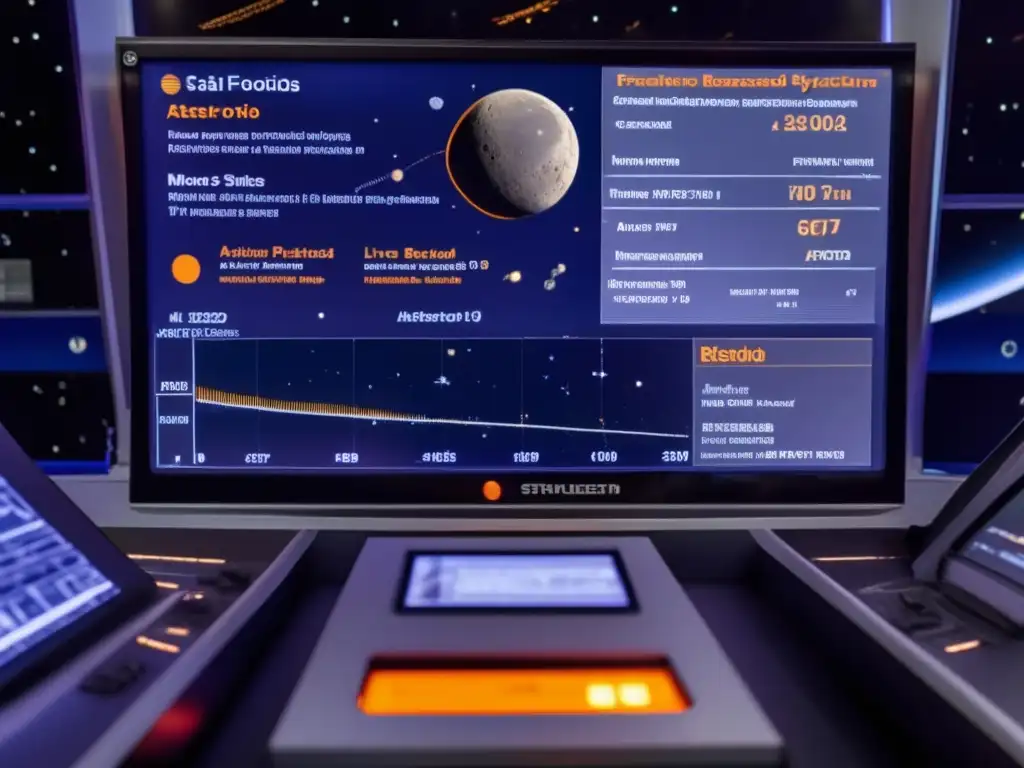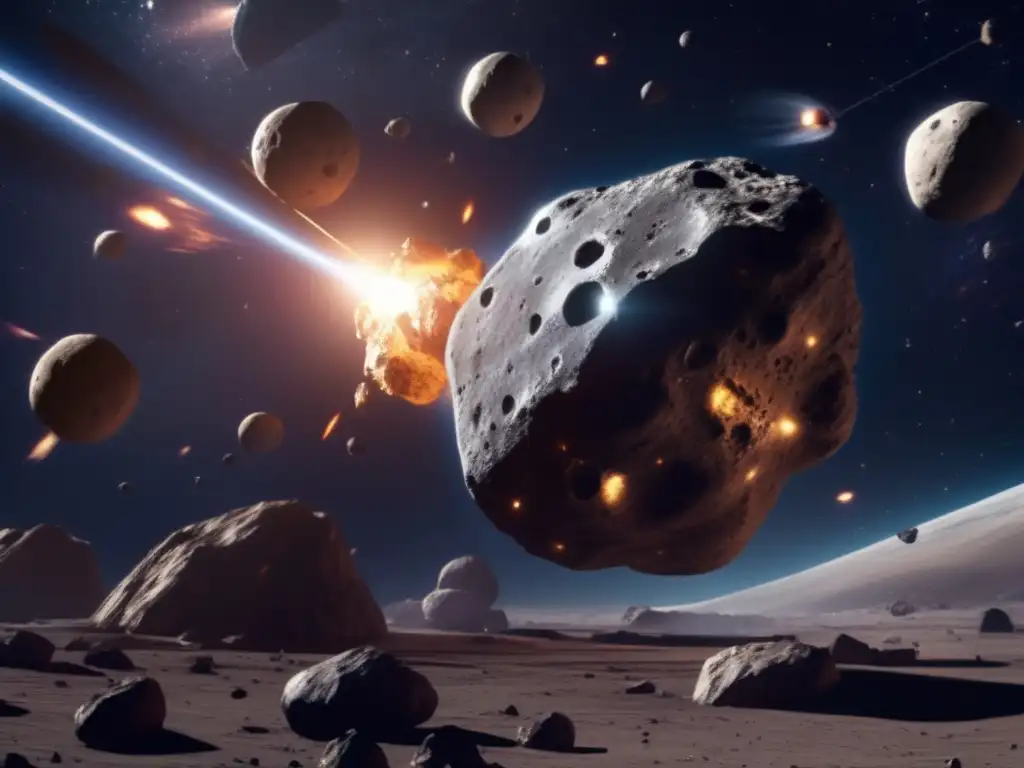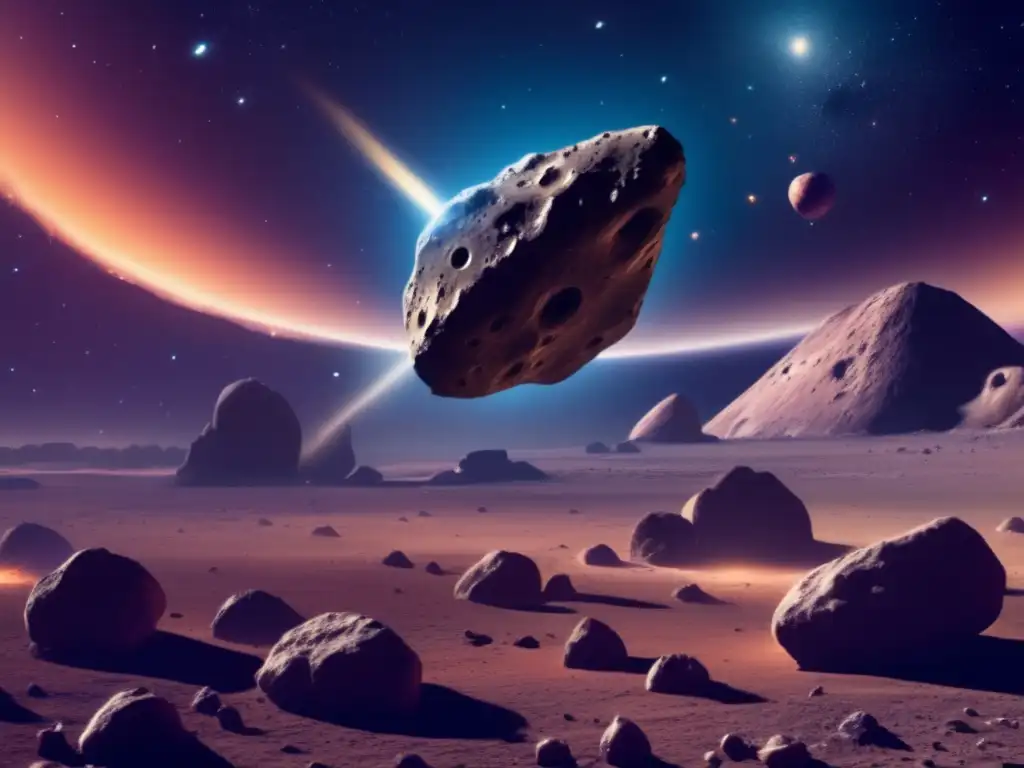Future Shield: Technologies In The Fight Against Asteroids

Introduction
Asteroids have always been a topic of fascination for scientists and space enthusiasts due to their potential threat to Earth. Asteroid collisions have caused significant damage to our planet in the past, and the possibility of another catastrophic event has prompted extensive research into planetary defense. In this article, we will explore the latest technologies being developed for asteroid detection, mitigation, and deflection.
Ground-Based Detection Systems

The Panoramic Survey Telescope and Rapid Response System (Pan-STARRS)
Pan-STARRS is a wide-field imaging facility located in Hawaii that can discover asteroids as small as 300 meters across. The system uses four telescopes equipped with advanced digital cameras to survey the entire sky every week. The data collected is analyzed by an automated pipeline that identifies any moving objects that could potentially be hazardous to Earth.
Laser Ranging Interferometer (LRI)
The LRI is a telescope-based system that measures the distance between Earth and near-Earth objects (NEOs) accurately. By using a combination of radar and laser detection techniques, the LRI can determine the size and shape of the NEO and its trajectory with high precision. This information is crucial for developing effective mitigation strategies.
Planetary Radar
Several ground-based radar systems have been developed to detect and track NEOs. These systems use high-frequency radio waves to reflect off the surface of the asteroid and provide valuable information about its size, shape, composition, rotation rate, and surface features.
Satellite-Based Detection Systems

Near-Earth Object Wide-field Infrared Survey Explorer (NEOWISE)
The NEOWISE satellite is a NASA mission that uses infrared imaging to detect and characterize NEOs. The satellite has already discovered thousands of asteroids and comets and provided valuable data on their physical properties. NEOWISE can detect even the darkest and smallest asteroids, which makes it a crucial tool for early detection and tracking.
Large Synoptic Survey Telescope (LSST)
The LSST is an upcoming ground-based telescope that will use a 3.2-gigapixel camera to survey the entire sky every few nights. The telescope will detect anything that moves or changes in the night sky, including asteroids. The LSST will provide the most extensive and comprehensive survey of the sky ever, making it an invaluable tool for planetary defense.
Deep Space Climate Observatory (DSCOVR)
The DSCOVR satellite is a joint project between NASA and the National Oceanic and Atmospheric Administration (NOAA). The primary mission of the spacecraft is to monitor the solar wind and provide critical data for space weather prediction. However, the satellite also has a secondary mission of detecting and tracking NEOs.
Mitigation Strategies

Kinetic Impactor
A kinetic impactor is a spacecraft designed to collide with an asteroid at high speed and change its trajectory. The spacecraft uses its kinetic energy to transfer enough momentum to the asteroid to deflect it from its collision course with Earth. This strategy would be effective if the asteroid were detected with enough lead time to launch a spacecraft with sufficient energy to change its path.
Gravity Tractor
A gravity tractor is a spacecraft designed to fly in close proximity to an asteroid and use its gravity to gently tug it off course. The spacecraft does not need to impact the asteroid, which makes it a more practical and lower-risk option compared to the kinetic impactor. However, this strategy requires that the spacecraft remain in close proximity to the asteroid for an extended period.
Solar Sail
A solar sail is a spacecraft that uses the pressure of sunlight to propel itself through space. By deploying a large reflective sail, the spacecraft can use the momentum of the photons to generate an acceleration force. This strategy could be used to deflect small, low-mass asteroids that are difficult to deflect using conventional methods.
Defense Against Multiple Objects

Multi-Object Killer Asteroid System (MOKAS)
MOKAS is a proposed system that involves deploying multiple kinetic impactors simultaneously to target multiple asteroids. This approach could be particularly useful if there were multiple asteroids on a collision course with Earth, as it would allow for the deflection of several objects simultaneously.
Enhanced Laser Interceptor and Deflection Operation (ELIADO)
ELIADO is a proposed system that uses high-powered lasers mounted on a satellite to vaporize the surface of an asteroid. The vaporization process creates a powerful thrust that can alter the asteroid's trajectory. This strategy could be used to deflect small asteroids or to fragment larger ones into smaller, less threatening pieces.
Planetary Defense Coordination Office (PDCO)
The PDCO is a NASA organization responsible for coordinating global efforts to detect, track, and mitigate near-Earth object threats. The PDCO works closely with other space agencies and international organizations to develop comprehensive planetary defense strategies.
Frequently Asked Questions

-
What is the likelihood of an asteroid collision with Earth?
The chances of an asteroid collision with Earth are low, but the potential consequences are severe enough to warrant a significant investment in planetary defense.
-
Can we destroy an asteroid if it is on a collision course with Earth?
It is unlikely that we would be able to destroy an asteroid completely, but we could deflect it enough to avoid a collision.
-
How much time do we have to prepare for an asteroid impact?
The amount of lead time we have to prepare for an asteroid impact depends on the size and trajectory of the object. Detecting and diverting a small asteroid could take a few years, while a larger one could require decades of preparation.
-
Are there any asteroids currently on a collision course with Earth?
At present, there are no known asteroids on a collision course with our planet.
-
What can individuals do to support planetary defense efforts?
Individuals can raise awareness about the importance of planetary defense and support organizations that are working to develop effective asteroid detection and mitigation strategies.
Conclusion
The threat of asteroid impacts cannot be ignored, and the development of effective planetary defense strategies is crucial for our survival. Ground-based and satellite-based detection systems, along with innovative mitigation techniques, will play a critical role in protecting Earth from potential asteroid collisions. We must continue to invest in planetary defense research and development and work together to ensure that our planet remains safe from this potential threat.
Thank you for taking the time to read this article. Please share your thoughts and comments in the section below, and don't forget to subscribe to www.asteroidrealm.com for more updates on the fascinating world of asteroids and space exploration.
Additional Resources

For more information on planetary defense and asteroid detection and mitigation strategies, please visit the following links:
- NASA Near-Earth Object Program
- NASA Jet Propulsion Laboratory Center for Near-Earth Object Studies
- European Space Agency Space Situational Awareness Program
- National Oceanic and Atmospheric Administration Space Weather Impacts and Response
 Shields Up: Current Measures For Asteroid Defense
Shields Up: Current Measures For Asteroid Defense Asteroids Vs. Earth: Our Defense Strategies
Asteroids Vs. Earth: Our Defense Strategies Cosmic Defenders: Current Techniques In Asteroid Prevention
Cosmic Defenders: Current Techniques In Asteroid PreventionIf you want to discover more articles similar to Future Shield: Technologies In The Fight Against Asteroids, you can visit the Planetary Defense category.
Leave a Reply

Articulos relacionados: